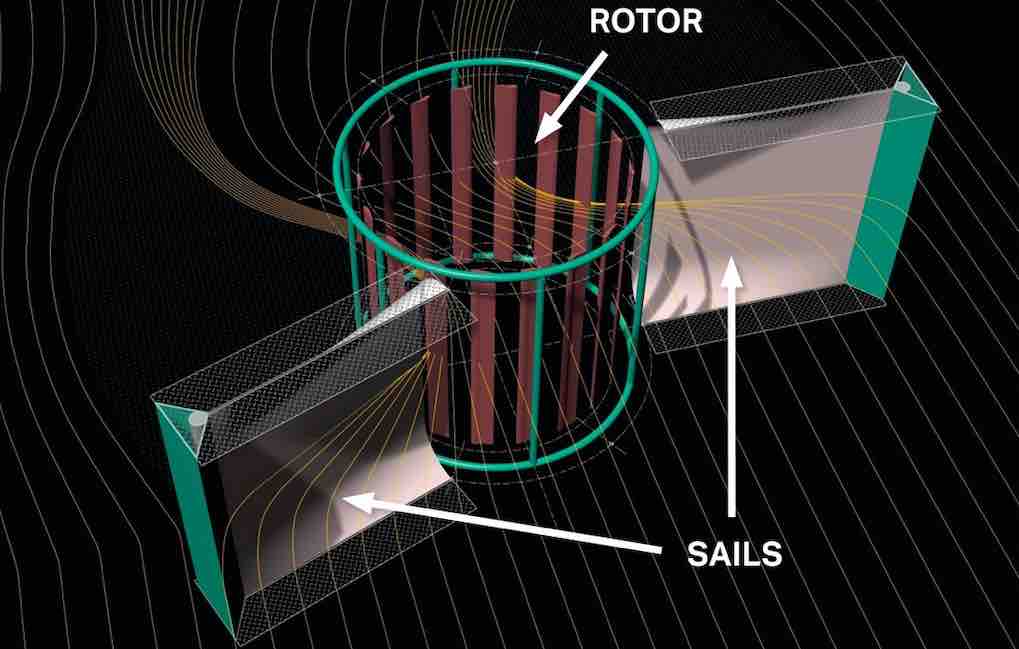GVWT Energy Pte Ltd hopes to create a storm in the renewables industry when its first generation 3MW Guided Vane Wind Turbine (GVWT) is installed at a site in Singapore later this year. At scale, the GVW turbine can potentially produce energy at a cost of $0.01/kWh
The GVW turbine’s patent-protected design comprises a vertical axis wind turbine. While vertical axis versions are not new, with several types deployed in the small wind market, GVWT Energy’s design is unique due to the turbine’s integration with articulated guide vanes that can deploy large-area retractable sails.
The guide vanes, which yaw from left to right, in combination with wind capture devices, control the pattern of air flow to increase momentum and velocity as it encounters the rotor blades.
This technique produces a wind turbine that can generate electricity in wind speeds as low as three metres per second to as high as 30 metres per second. The GVW turbine’s augmentation apparatus includes a vent situated close to the rotor. Results from computational fluid dynamics (CFD) show that air passing through the vent achieves higher momentum and velocity than the ambient air, to deliver more kinetic energy coming into contact with the rotor blade.
According to CFD modelling the overall kinetic energy available to act on the blades is increased to 92% compared with 8% from “typical” ambient wind that passes over conventional turbine rotor blades. The additional kinetic energy is able to turn the blades at a far greater velocity. The system acts like a ram jet propulsive thrust, albeit based on wind energy. This design reduces the inefficiencies found with typical vertical axis wind turbines.
By producing much more power from a single device, GVWT Energy envisages its turbine can, at scale, produce electricity at a fraction of the cost of conventional three-blade turbines used in utility-scale wind farms, as well as vertical axis wind turbines and solar photovoltaics. An additional benefit is that the GVWT requires much less land in a multi-stack configuration, which GVWT Energy is working on at present.
Read the full feature on:

